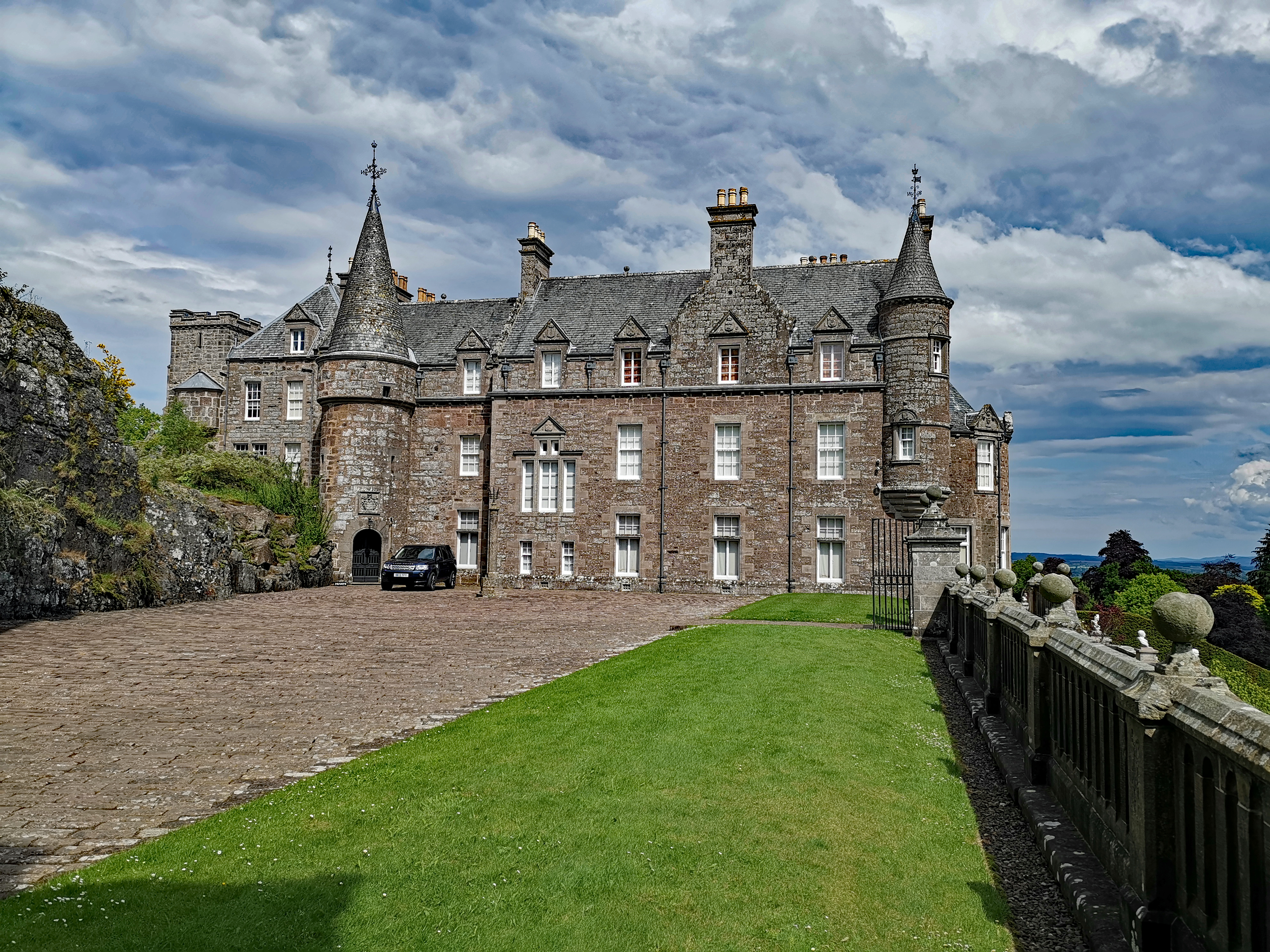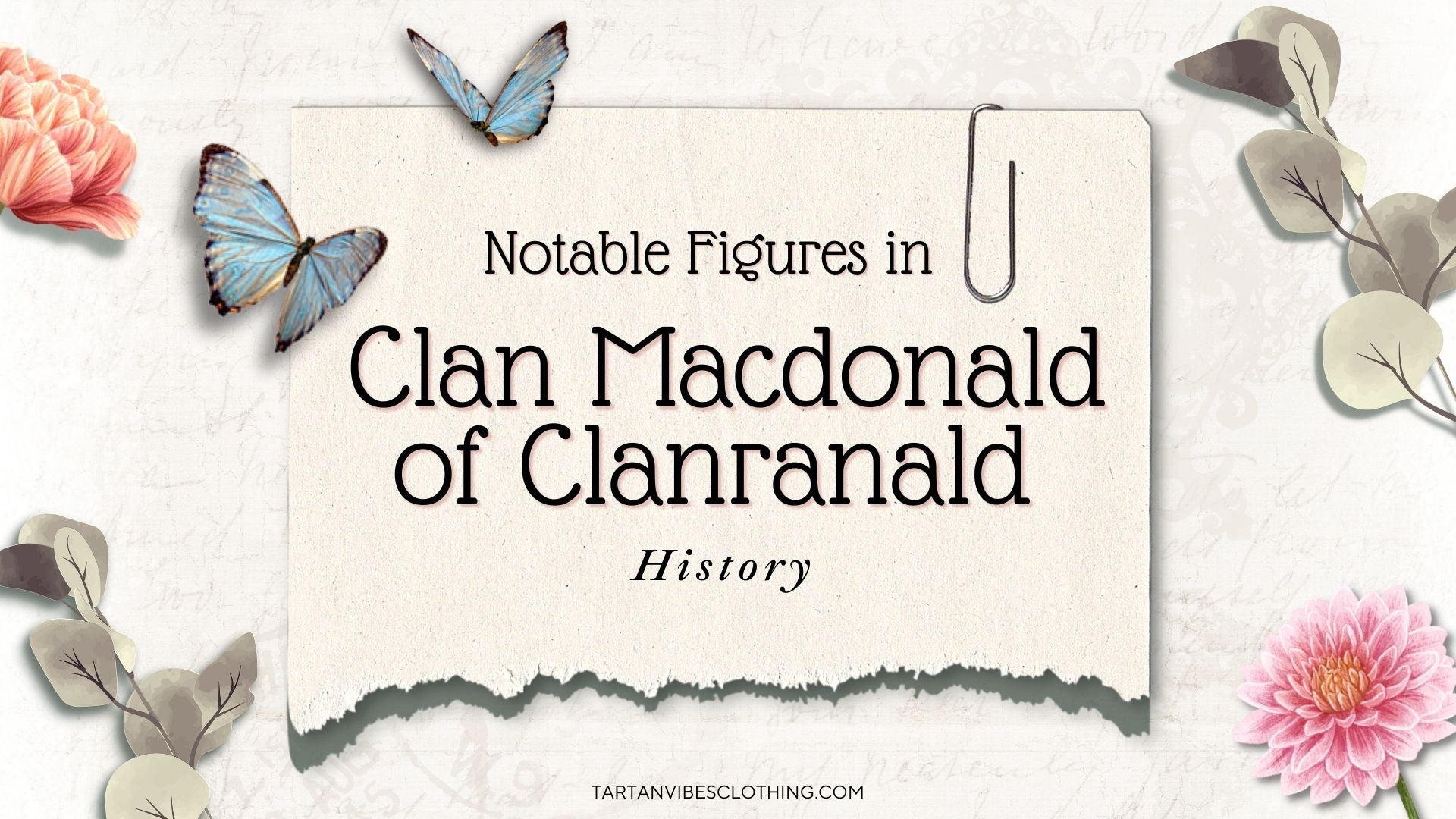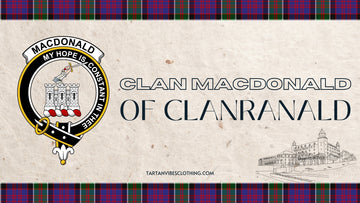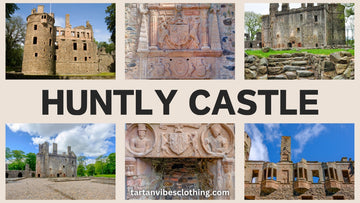Unveiling the Legacy of Clan Macdonald of Clanranald
by Teejay Smith on Apr 05, 2024
Table of Content
Introduction
Welcome to the captivating tale of Clan Macdonald of Clanranald, a Scottish clan with a storied past and an enduring presence. From their ancient origins to their modern-day influence, this article will take you on a journey through the annals of history, exploring the traditions, legends, and notable figures that define the legacy of Clan Macdonald of Clanranald.
History of Clan MacDonald of Clanranald
The Origins of Clan Macdonald of Clanranald
The roots of Clan Macdonald of Clanranald trace back to the rugged landscapes of medieval Scotland. Belonging to the larger Clan Donald, Clan Macdonald of Clanranald emerged as a distinct branch with its own unique traditions and leadership.

14th century
Reginald, the first of Clanranald, inherited most of Clann Ruaidhrí's old lands through his mother Amie mac Ruari. His father, John, confirmed this inheritance in 1371 through a charter, granting him additional lands on the mainland. Reginald's younger half-brother, Donald, succeeded to the lordship of the isles and chiefship of Clan Donald upon John's death. Reginald died in 1386 and was succeeded by his eldest son, Allan.
During this era, from Reginald to his great-grandson Allan, the history of Clan Macdonald of Clanranald is obscured. No family charters exist between 1372 and 1495, making it difficult to determine their territories precisely. The earliest document shedding light on this period is a charter issued by James V to John Moidartach in 1531, indicating lands held by Allan's grandfather and predecessors. This fragment of Ranald's original lands likely comprised the remaining inheritance for Reginald's descendants by Allan's time.
15th century
In 1427, James convened parliament in Inverness. He summoned local chiefs, among whom Alexander (son of Godfrey and nephew of Reginald) and John MacArthur (of Clan Arthur) were promptly captured and executed. Allan, Reginald's son, appears to have survived, as his name appears in the Exchequer Rolls of 1428.
However, little else is known about him beyond genealogies and manuscript histories, leaving uncertainty regarding his succession to his father's lands after Alexander's execution. Having been granted lands by the crown, Allan would have been favored as a successor. Allan is said to have fought at the Battle of Harlaw in 1411 alongside his brothers Donald and Dugald.
According to Macdonald and Macdonald, Allan likely died between 1428 and 1430 at Castle Tioram, succeeded by his eldest son, Roderick. The descendants of Godfrey saw their power decline gradually after Alexander's death, though they retained control over the lands of North Uist. Roderick, the third of Clanranald, supported the Earl of Ross against the Scottish crown, participating in various expeditions and battles. He died in 1481, leaving his descendants embroiled in territorial disputes.
Allan, the fourth of Clanranald, played a significant role in Highland politics, supporting various claimants to power. He participated in battles and raids, and during his chiefship, a dispute arose over the lands of Sunart. Allan is remembered for his feud with Hector Odhar Maclean, during which he displayed cunning and strategic prowess. Little is known about his later years, and his death is recorded as occurring in 1505 at Blair Atholl. He was succeeded by his son, Ranald Bane.
16th century
Ranald Bane's execution in 1509 marked a tumultuous period for Clan Macdonald of Clanranald, followed by the assassination of his son Dougall in 1520, attributed to his harsh rule. Leadership then passed to Alexander, whose tenure ended before 1530, leading to Ranald Gallda's emergence as the primary heir, although facing challenges from John Moidartach. John's victory at the Battle of the Shirts in 1544 solidified his position as chief.
Allan succeeded him in 1584 amidst internal strife and external conflicts. His reign saw alliances, feuds, and raids, further entangling Clanranald in Highland politics. Angus, Allan's successor, met a premature demise, thrusting Donald into leadership. Donald's tenure was marked by military engagements, including conflicts with the Clan Maclean and involvement in Irish campaigns. Despite challenges, Clanranald remained a prominent force in the Highlands.
17th century
John, the 12th of Clanranald, fought in conflicts alongside Montrose and MacColla, securing victories against Argyll's forces. He died in 1670, succeeded by his son Donald. Donald, 13th of Clanranald, oversaw repairs at Castle Tioram and died in 1686, passing the leadership to his son Allan, the 14th of Clanranald, who received education in Inverness and at home before Castle Tioram was occupied and later vacated.

18th century
Allan, 15th of Clanranald, was mortally wounded at the Battle of Sheriffmuir in 1715. He died the next day at Drummond Castle and was buried at Innerpeffray. He was succeeded by his brother, Ranald. Ranald, 15th of Clanranald, died unmarried in 1725 in Paris. The leadership passed to Donald Macdonald of Benbecula. Donald, 16th of Clanranald, died in 1730 and was succeeded by his eldest son, Ranald.
Ranald, 17th of Clanranald, refused to support Charles Edward Stuart in the 1745 rebellion. He died in 1766 and was succeeded by his eldest son, also named Ranald. Ranald, 18th of Clanranald, fought alongside Charles Edward Stuart in the rebellion and later spent time in France. He died in 1776 and was succeeded by his eldest son, John Moidartach. John Moidartach, 19th of Clanranald, died in Edinburgh in 1794 and was succeeded by his eldest surviving son, Ranald George.

MacDonald of Clanranald Clan Crest
Gaelic Name: MacDhomhnuill
Crest: A triple-towered castle Argent masoned Sable, and issuing from the centre tower a dexter arm in armour embowed grasping a sword, all Proper
Motto: My Hope Is Constant In Thee
Badge: Heather
Lands: Northern Isles, North-west Argyll
Clan Chief: The Captain Of Clanranald

The MacDonald of Clanranald Clan Crest features an armored bent arm holding a sword emerging from a castle. The clan motto, "My Hope is Constant in Thee," originates from Robert Bruce's address to Angus Og Macdonald and his Men of the Isles during the Battle of Bannockburn in 1319. Bruce held back the Islanders until the main forces had engaged, then unleashed them with their renowned Highland charge, securing victory for Scotland's independence. Anyone tracing their lineage to the Clan Macdonald of Clanranald can proudly display this crest.
The history of the Clan Macdonald of Clanranald is deeply intertwined with the land, making it essential to understand the terrain to grasp the branch's significance. The Celtic names bestowed upon these lands provide valuable insights into both the geography and the customs of our ancestors.
Notable Figures in Clan Macdonald of Clanranald History
Explore the lives and legacies of some of the most prominent figures in Clan Macdonald of Clanranald's history, from legendary warriors to revered chieftains.

Ranald Macdonald, 15th Chief of Clanranald
Ranald Macdonald, also known as Ranald Gallda, was a pivotal figure in Clan Macdonald of Clanranald's history. His leadership during turbulent times ensured the clan's survival and prosperity.
Allan Macdonald, 17th Chief of Clanranald
Ranald Alexander MacDonald of Clanranald, the 24th Captain and Chief of Clanranald
He spent his early years in England and later served in Hong Kong before becoming a territorial officer in the Queen's Own Cameron Highlanders. After establishing successful business ventures in London, he retired to his residence in Killin, Perthshire. Clanranald is actively involved in Clan and Highland heritage projects, serves as a trustee for various trusts, and is known for overseeing the construction of a replica of Celtic Galley named Aileach.
He holds positions in charitable organizations and is a direct descendant of the Boisdale branch of Clanranald. Clanranald's children are also accomplished in their respective fields, with his daughter Kate being a renowned artist. In formal settings, he is referred to as The Captain of Clanranald.
Clan Macdonald of Clanranald Tartan

The Clan Macdonald of Clanranald Tartan is a traditional Scottish tartan associated with the Clan Macdonald of Clanranald. It features a striking pattern of colors, typically consisting of dark green, navy blue, black, and red. Clan Ranald Macdonald tartan holds historical significance for the clan and is often worn with pride by members during special occasions and gatherings. The distinctive design and colors of the Clan Macdonald of Clanranald Tartan serve as a symbol of the clan's heritage and identity.
Explore the timeless traditions of Clan Macdonald of Clanranald through our collection of tartan products on our website. And bring a piece of the clan's history into your present.
Cultural Significance and Traditions Of Clan Macdonald of Clanranald
Clan Macdonald of Clanranald holds a deep cultural significance within the fabric of Scottish heritage. Its traditions are steeped in centuries-old customs and rituals that reflect the clan's values, beliefs, and identity.

Clanranald Society
At the heart of Clan Macdonald of Clanranald's cultural preservation efforts lies the Clanranald Society. This organization is dedicated to upholding the traditions and values of the Clan Macdonald of Clanranald, ensuring they are passed down from generation to generation. Through various initiatives such as historical research, educational programs, and clan gatherings, the Clanranald Society plays a pivotal role in fostering a sense of community among clan members and preserving their shared heritage.
Festivals and Events
Throughout the year, Clan Macdonald of Clanranald celebrates its rich cultural heritage through a myriad of festivals and events. These gatherings serve as vibrant expressions of clan pride and solidarity, bringing together members from far and wide to honor their ancestry and traditions. From Highland games and ceilidhs to traditional music performances and storytelling sessions, these events offer a glimpse into the rich tapestry of Scottish culture and provide an opportunity for clan members to reconnect with their roots.
The cultural significance of Clan Macdonald of Clanranald extends beyond its own community, influencing broader Scottish society and contributing to the preservation of Scotland's cultural heritage. Through its steadfast commitment to tradition and its vibrant celebration of Scottish culture, Clan Macdonald of Clanranald continues to leave an indelible mark on the cultural landscape of Scotland.
Conclusion
In conclusion, Clan Macdonald of Clanranald stands as a testament to the enduring spirit of the Scottish Highlands. From their ancient origins to their modern-day presence, the clan's legacy inspires and unites generations of Scots worldwide.
Frequently Asked Questions
What is the significance of the name "Clan Macdonald of Clanranald"?
The name "Clan Macdonald of Clanranald" refers to the specific branch of the larger Clan Donald, known for its connections to the region of Clanranald in the Scottish Highlands.
How can I trace my ancestry to Clan Macdonald of Clanranald?
Many individuals with Scottish heritage can trace their ancestry to Clan Macdonald of Clanranald through genealogical records, historical documents, and DNA testing.
What role did Clan Macdonald of Clanranald play in Scottish history?
Clan Macdonald of Clanranald played a significant role in Scottish history, participating in battles, alliances, and political events that shaped the nation's destiny.
Are there any famous landmarks associated with Clan Macdonald of Clanranald?
Yes, several landmarks in Scotland are associated with Clan Macdonald of Clanranald, including castles, burial grounds, and historic sites.
How can I learn more about Clan Macdonald of Clanranald's history and heritage?
There are numerous resources available for those interested in learning about Clan Macdonald of Clanranald, including books, websites, and cultural organizations dedicated to Scottish history and genealogy.
Is Clan Macdonald of Clanranald still active today?
Yes, Clan Macdonald of Clanranald remains an active and vibrant community, with members around the world celebrating their shared heritage and culture.






